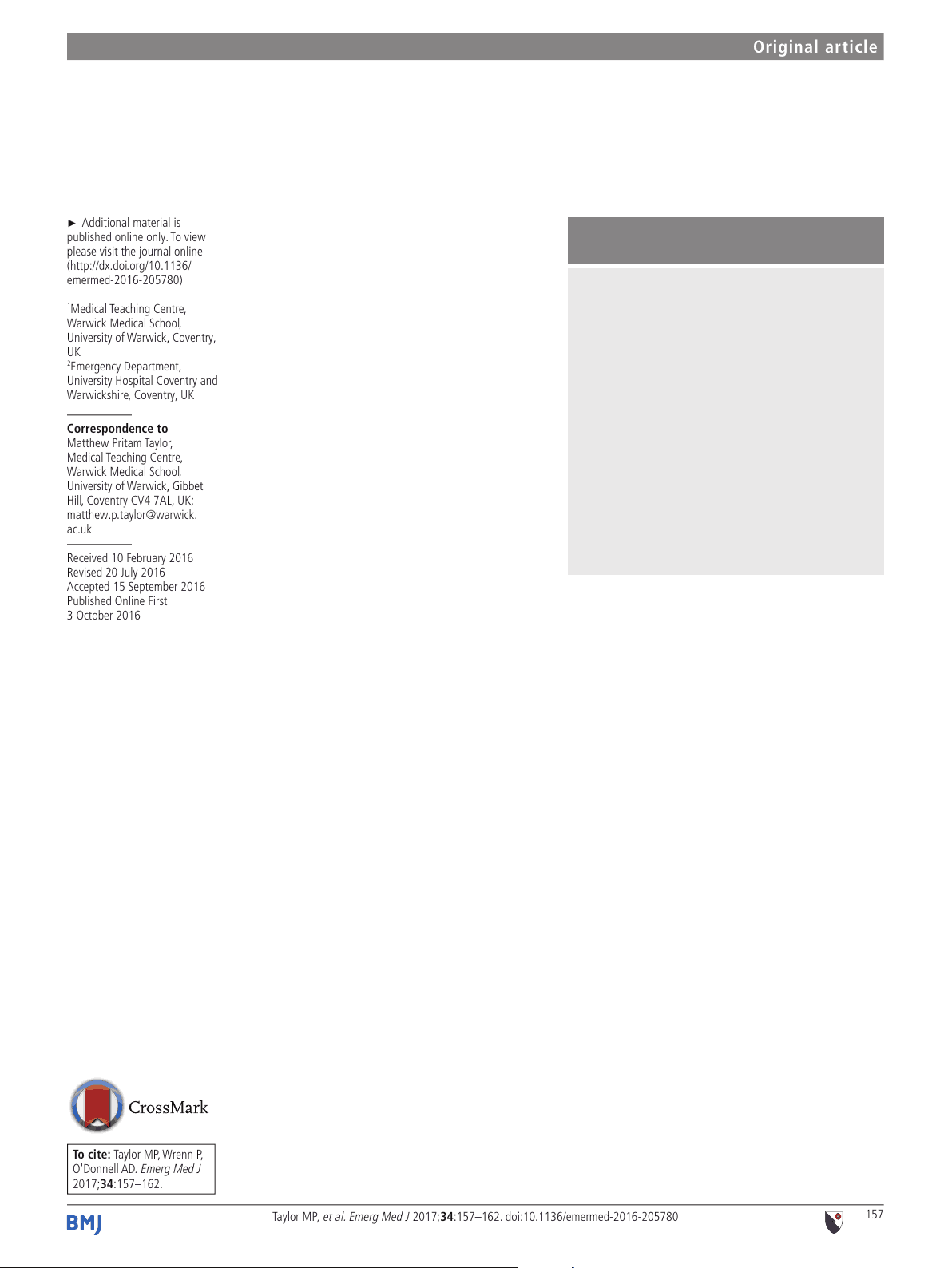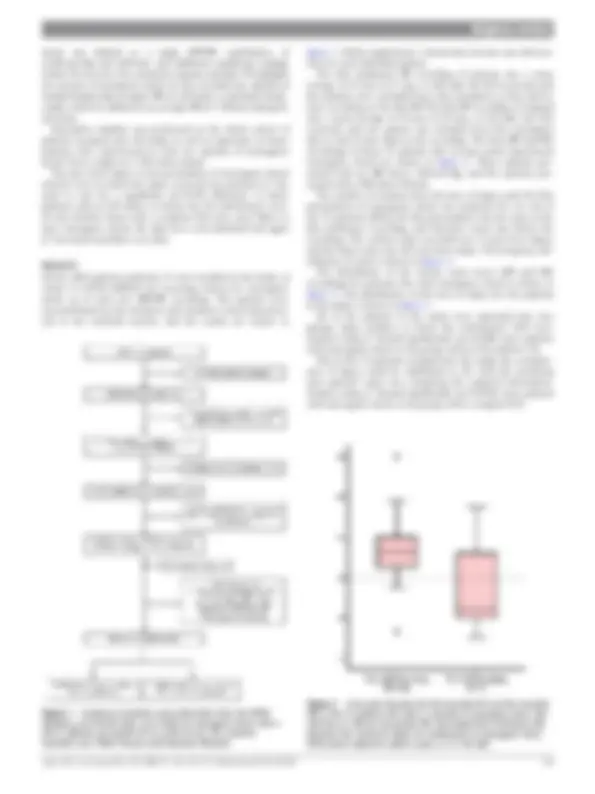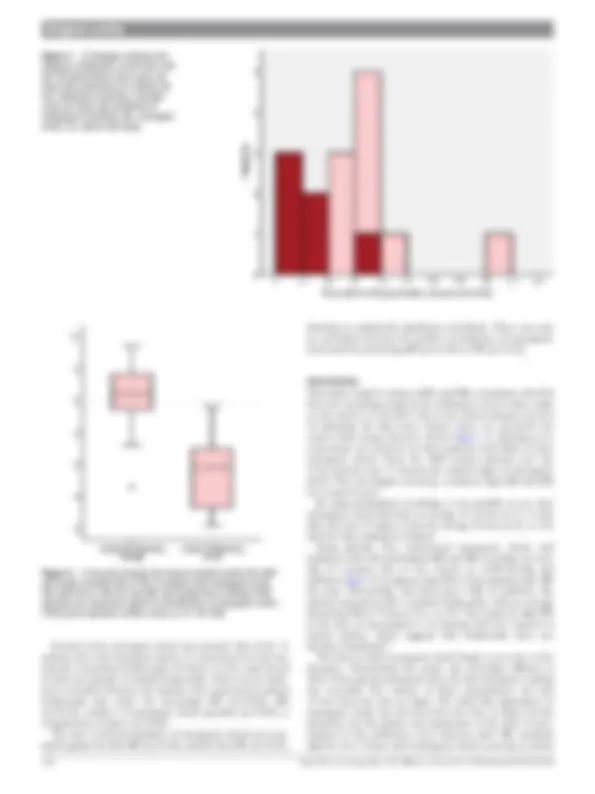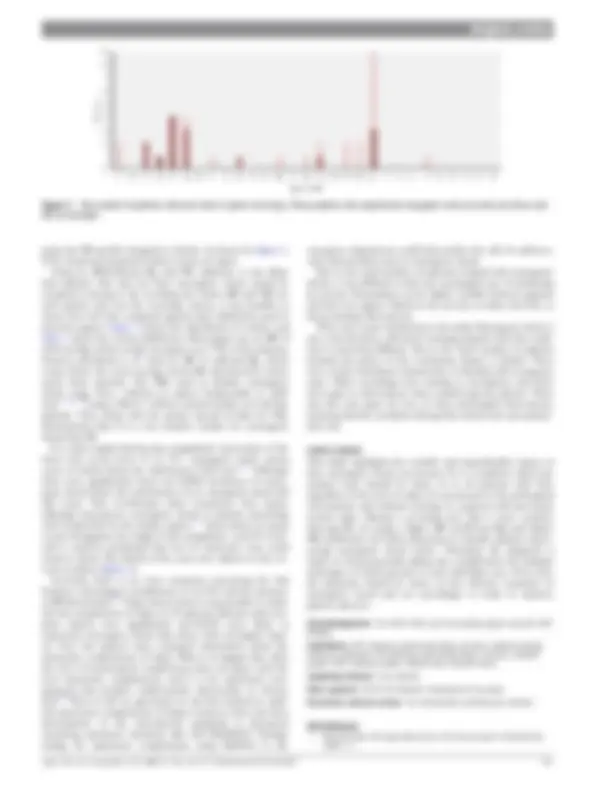





Study with the several resources on Docsity

Earn points by helping other students or get them with a premium plan


Prepare for your exams
Study with the several resources on Docsity

Earn points to download
Earn points by helping other students or get them with a premium plan
Community
Ask the community for help and clear up your study doubts
Discover the best universities in your country according to Docsity users
Free resources
Download our free guides on studying techniques, anxiety management strategies, and thesis advice from Docsity tutors
An analysis of neurogenic shock, a condition caused by injury to the spinal cord resulting in loss of sympathetic innervation and subsequent hypotension and bradycardia. the variability and unpredictability of neurogenic shock, its presentation in animals and humans, and the challenges in identifying and defining this condition. The study aims to investigate the time course of neurogenic shock presenting to the emergency department to help physicians identify it more effectively and improve patient outcomes.
Typology: Study notes
1 / 6

This page cannot be seen from the preview
Don't miss anything!




An injury to the spinal cord can cause instantan- eous and possibly permanent dysfunction below the level of injury. If this involves part of the spinal cord associated with the sympathetic nervous system, a condition called neurogenic shock can develop. Shock is said to be a state of inadequate tissue perfusion. 1 Neurogenic shock occurs when the spinal cord is injured and sympathetic innervation to the heart along with vasomotor tone is lost, with prevailing parasympathetic innervation by the intact vagus nerve. This results in hypotension and bradycardia, the classical signs of neurogenic shock. This is in contrast to spinal shock, which is a condi- tion that occurs within 24 hours following a spinal cord injury (SCI) where a patient will have total loss of reflexes, flaccid paralysis and complete loss of sensation below the site of injury. 2 Preganglionic sympathetic neurons originating in the hypothalamus, pons and medulla are located in the intermediolateral cell column of the spinal cord
between the first thoracic (T1) and second lumbar (L2) vertebrae.3 4^ Theoretically, any SCI within or above this could cause sympathetic disruption. Since sympathetic innervation of the heart only occurs from T1 to T5,^5 it is often said that neuro- genic shock can only occur when the lesion is above the mid-thoracic (T6) level.3 6 Animal studies in cats, dogs and rats demonstrate inconsistency in the presentation of neurogenic shock, with occurrence ranging from minutes to hours post-transection.^7 It has also been shown in some animal studies that immediately following transection of the spinal cord there is a tachycardia, possibly due to massive release of catecholamines.^4 In humans, the greatest level of bradycardia was shown to occur around 4 days postinjury; however, this study was conducted in a specialist spinal injury unit and therefore did not take into account the initial changes in BP either prehospital or in the emergency department. 8 Due to its complex nature, there are no rigid cri- teria for defining neurogenic shock. This is partly due to the evolving nature of a trauma patient’s BP and HR and the possibility of other aetiologies of shock occurring simultaneously. In previous research, Guly and colleagues highlight how identi- fying patients with neurogenic shock is especially difficult in cases with a mixed picture shock, with aspects such as pain, anxiety and haemorrhage clouding any clear presentation.^7 Because of these issues, the BPs and HRs used in previous studies are quite variable (table 1). Identification of neurogenic shock is important. Often treatment for neurogenic shock needs to take
To cite:Taylor MP, Wrenn P, O'Donnell AD. Emerg Med J 2017; 34 :157–162.
► Additional material is published online only. To view please visit the journal online (h t t p :/ / d x.do i.or g / 1 0. 1 1 3 6 / e m e r m e d - 2 0 1 6 - 2 0 57 80 )
(^1) Medical Teaching Centre, Warwick Medical School, University of Warwick, Coventry, UK (^2) Emergency Department, University Hospital Coventry and Warwickshire, Coventry, UK
Correspondence to Matthew Pritam Taylor, Medical Teaching Centre, Warwick Medical School, University of Warwick, Gibbet Hill, Coventry CV4 7AL, UK; matthew.p.taylor@warwick. ac.uk
Received 10 February 2016 Revised 20 July 2016 Accepted 15 September 2016 Published Online First 3 October 2016
place before the definitive diagnosis of an SCI has been estab- lished. The aim is to maintain perfusion to the body and com- promised spinal cord, helping reduce secondary cord damage, which can make a substantial difference to a patient’s morbid- ity. 15 16 Neurogenic shock also prevents the vasoconstriction and increase in cardiac output required if the patient is also hypovolaemic. One characteristic of neurogenic shock is the partial resistance to fluids, which could be misinterpreted as volume loss. 17 This could result in overhydration of the patient, causing pulmonary or spinal cord oedema. 17 Appropriate management involves initial use of fluids followed by support of HR and BP by vaso- pressors and sympathomimetics; the specific drugs are currently debated in the literature. 18 Identification of neurogenic shock followed by appropriate treatment and maintenance of BP is one of the few interventions linked with better neurological outcome. 16 18 To date most research into the effect of SCI on the cardiovas- cular system has only been conducted in specialist spinal injury units, leaving a gap in research investigating the time course of neurogenic shock presenting to the emergency department. No studies take into consideration all the prehospital BPs and HRs recorded by the ambulance crew, and all the recordings taken in the acute setting such as those recorded on the trauma sheet. By looking at patient observations in the prehospital environ- ment, in the emergency department and in the intensive treat- ment unit (ITU), this research hopes to gain a better understanding of how neurogenic shock presents in humans. In turn, this will help physicians identify neurogenic shock more effectively, leading to better patient outcomes.
Because there is no agreed definition, before starting the study, a BP and HR were required to help isolate patients presenting with neurogenic shock. As the study included patient observa- tions taken in an acute environment, selection criteria that were encompassing enough to highlight all patients with neurogenic shock were required. We, therefore, defined neurogenic shock as a condition in those patients with an SCI, a systolic BP (sBP) of ≤100 mm Hg and a HR of ≤80/min. This HR is high enough to encompass all neurogenic shock cases, while also excluding pure haemorrhagic shock, which typically presents with an increased HR.
The study looked at patients presenting acutely to the adult major trauma centre at University Hospital Coventry and
Warwickshire (UHCW, Coventry, UK), for a 3-year period start- ing from 1 January 2012. Patients were selected using the Trauma Audit and Research Network (TARN) database for the hospital. This database registers information regarding all patients presenting with trauma, whose length of stay is ≥ 3 days, who were admitted to a high-dependency area or who died in the emergency department.^19 The detailed inclusion cri- teria for TARN can be found on their website at http://www. tarn.ac.uk. 19 According to TARN, in this 3-year period, there were a total of 3069 trauma patients admitted to UHCW. 20 An initial search was performed by the hospital TARN department to create a database of those patients with any ‘spinal injury’ (ICD-10 codes: S120-133, S140-141, S220-2211, S230-233, S240-241, S320-3201, S327-331, S340-341). A further search was com- pleted of the injury summary of these patients, isolating those with either neurological compromise or complete cord syndrome. Out of these, any patient who fulfilled our criteria for neurogenic shock on any sBP/HR combination recorded on the database was selected. Additionally, all patients who were transferred to the ITU were selected. Up until this point, patient identifiable data were hidden behind a submission ID in the TARN database. Ethical approval was gained from both The University of Warwick (Ref: REGO-20150-1619) and UHCW (Ref: GF0010). The selected patients’ submission IDs were used to request their notes through the hospital TARN coordinator. Full clinical notes were then examined, and the following data, where avail- able, were anonymously recorded into a database created for this purpose: ▸ Systolic and diastolic BPs and HRs with timestamps from:
The following criteria excluded patients from the study: ▸ Patients with interhospital transfer ▸ Patients currently undergoing treatment as an inpatient ▸ Patients whose full clinical notes could not be obtained from clinical records ▸ If there was a greater than 2-hour delay from time of inci- dent to presentation to emergency services ▸ The patient has a simple and stable spinal fracture not involv- ing the spinal cord. ▸ The patient had a significant comorbidity at the time of the injury, and this would include having a cardiac arrest. ▸ The patient already had spinal pathology. ▸ The patient’s most severe injury region, calculated by the body region with the highest abbreviated injury scale score, was coded as ‘head’. We found those with a severe head injury difficult to assess.
For each patient accepted into the study, the number of episodes of neurogenic shock was recorded. An episode of neurogenic
Table 1 A summary of the criteria used to define neurogenic shock from a selection of papers Paper sBP (mm Hg) HR (bpm)
Bernhard et al^9 <70 < Grigorean et al^10 <90 – Guly et al^7 <100 < Lehmann et al^8 <90 – Levi et al^11 <90 – Ley et al^12 ≤ 90 ≤ 90 Moerman et al^13 <80 < Zipnick et al^14 <100 < The systolic BP (sBP) in mm Hg and HR in bpm were recorded if discussed in the paper.
Severity of the neurogenic shock was assessed. Out of the 15 patients who had neurogenic shock, 13 experienced at least one episode of persistent bradycardia. Of those 13, five experienced at least one episode of marked bradycardia. There was no statis- tical correlation between the patients who experienced marked bradycardia and either the presenting HR ( p=0.86), sBP ( p=0.34), number of neurogenic shock episodes (p=0.48) or completeness of injury ( p=0.20). The time to first presentation of neurogenic shock was com- pared against the first sBP ( p=0.28), and the first HR ( p=0.25),
showing no statistically significant correlation. There was also no correlation between the number of incidences of neurogenic shock and the presenting sBP ( p=0.48) or HR ( p=0.52).
This study looked in detail at BPs and HRs of patients with SCI from the recordings made by the ambulance crew to those made on the ward or in the ITU. Due to the labour-intensive process of obtaining the data from clinical notes, we narrowed our cohort down using selection criteria (figure 1), allowing us to concentrate our resources on those patients most likely to have neurogenic shock. From the 3069 trauma patients over the 3-year period, only 15 showed the classical signs of neurogenic shock. This was despite choosing a relatively high sBP and HR for a selection tool. By using prehospital recordings, it was possible to see how neurogenic shock develops an average of 34 min (±17, n=28) after the time of injury, versus the average 92 min (±25, n=32) until the first readings in hospital. Using patients who experienced neurogenic shock, and looking at their first prehospital sBP and HR recording, we were able to compare this to the criteria of ≤100 mm Hg and ≤80/min (figure 2). It appears that 80% of the patients had a BP less than 100 mm Hg, and 66% had a HR of ≤80/min. No patients presented with a marked bradycardia, with an average presenting HR of 74/min (±21, n=15). This relatively high HR at the time of presentation is in keeping with the research in animal studies, which suggests that bradycardia does not develop immediately. 4 The time at which neurogenic shock begins is not clear in the literature. Determining this point was somewhat difficult as 40% of the patients presented when the first ambulance reading was recorded. The earliest of these presentations was just 13 min from the time of injury. The latest first appearance of neurogenic shock was 263 min from the time of injury. In this particular case the patient was hypotensive at the time of pres- entation to the ambulance crew; however, their HR remained high for over 4 hours until neurogenic shock occurred, at which
Figure 3 A histogram showing the frequency distribution of the time until first NS presentation. Dark cases are those who presented at or before the first ambulance recording, and light cases are those who presented at subsequent recordings. NS, neurogenic shock; SCI, spinal cord injury.
Figure 4 A box plot showing the lowest recorded systolic BP (sBP) and lowest recorded HRs of the 15 patients with neurogenic shock. The solid line at 100 mm Hg (sBP) and dashed line at 80 bpm (HR) represent our maximum values for classification of neurogenic shock. Circle points represent outliers (cases ≥1.5× the IQR).
point the HR quickly dropped to 44/min. As shown by figure 3, 87% of patients presented within 2 hours of injury. Using an sBP≤100 mm Hg and HR ≤80/min, it was likely that patients who did not have neurogenic shock would be accepted as having it. By recording the lowest sBP and HR for each patient who met the screening criteria, it was possible to assess how well this compared against other definitions used in previous papers. Figure 4 shows the distribution of results, and table 1 shows the various definitions. Most papers use an sBP of ≤90 mm Hg, which would encompass over 75% of the patients; however, Bernhard et al^9 used an sBP of ≤80 mm Hg, which comes below the mean average lowest BP, and therefore selects much fewer patients. The HRs used to definite neurogenic shock range from <60/min (a typical bradycardia) to ≤90/ min. 9 12 13^ Using a HR of <60/min would exclude over half the patients. This, along with the greater spread of data for HR, demonstrates that it is a less sensitive marker for neurogenic shock than BP. It is often taught that because sympathetic innervation of the heart only occurs from T1 to T5,^5 neurogenic shock cannot occur in lesions below the mid-thoracic (T6) level.3 6^ Although there were significantly fewer (p=0.009) incidences of neuro- genic shock below the mid-thoracic level, neurogenic shock did still occur. This corroborates other researchers who report, although uncommon, neurogenic shock in patients presenting with isolated SCI in the lumbar region.2 7^ Innervation of vessels occurs throughout the length of the sympathetic cord (T1–L2),^5 and it could be postulated that loss of vasomotor tone could result in shock. Two-thirds of the cases were injuries to the cer- vical vertebrae (figure 5). Currently, there is no clear consensus concerning the link between neurological completeness of an SCI and the presence of BP abnormality. 22 Using clinical notes it was possible to estab- lish the completeness of injury in 29 patients. Patients with com- plete injuries were significantly ( p=0.039) more likely to experience neurogenic shock than those with incomplete injur- ies. Very few patient notes contained information about the autonomic completeness of injury. West et al suggest that often the level of neurological completeness does not agree with the level autonomic completeness, and it is the autonomic com- pleteness that predicts cardiovascular abnormality in chronic SCI.^22 There is still no agreement on the best method to estab- lish autonomic completeness of injury; however, there has been development of the international standards to document remaining autonomic functions after SCI (ISAFSCI). 5 Perhaps testing for autonomic completeness using ISAFSCI in the
emergency department could help predict the risk of cardiovas- cular abnormalities such as neurogenic shock. Due to the small number of patients isolated with neurogenic shock, it was difficult to find any meaningful way of predicting its severity. Presentation can be highly variable between patients and does not appear linked to the severity of either the SCI, or the presenting observations. There were some limitations to the study. Neurogenic shock is rare, and, therefore, effectively isolating patients with this condi- tion is somewhat difficult. Due to the small number of patients isolated, the power of the conclusions drawn is limited. There were certain limitations characteristic of dealing with emergency cases. Often recordings were missing or incomplete, and there were gaps in observations when transferring the patient. There was also only space for two or three prehospital observations, meaning that the resolution during this critical time was particu- larly low.
This study highlights the variable and unpredictable nature of how neurogenic shock can present. It is a condition which the medical team should be aware of in all patients with SCI, regardless of the level of injury. It can present in the prehospital environment and without warning in a patient with previously normal signs. Having a screening tool that is more sensitive than specific, by using a higher sBP (≤100 mm Hg) and higher HR (≤80/min), will allow physicians to identify patients experi- encing neurogenic shock earlier. Ultimately, the diagnosis is made on clinical grounds, taking into consideration the multiple aetiologies of shock present in each individual case. From here the physician should be aware of the effective treatment of neurogenic shock and act accordingly in order to improve patient outcome.
Acknowledgements The UHCW TARN team for providing support using the TARN database. Contributors MPT: planning, experimental design, execution, statistical analysis, writing up, publication. PW: planning, experimental design, execution, statistical analysis. ADO: statistical analysis, editorial work, literature search. Competing interests None declared. Ethics approval UHCW NHS Research, Development & Innovation. Provenance and peer review Not commissioned; externally peer reviewed.
1 Bonta MJ, Enlow JM. Approaching shock in the trauma patient. Emerg Med Rep 2008:3–17.
Figure 5 The number of patients with each level of spinal cord injury. Those patients who experienced neurogenic shock are dark and those who did not are light.